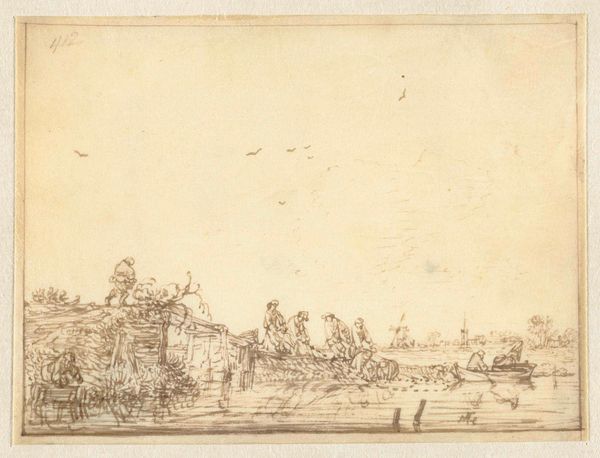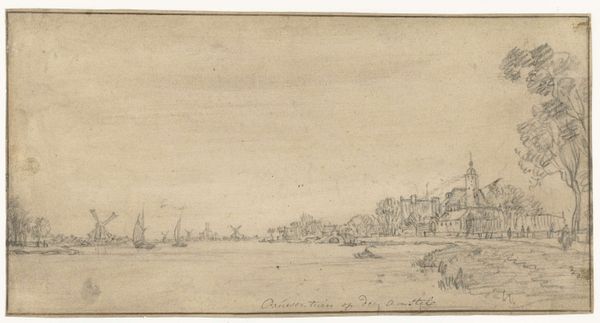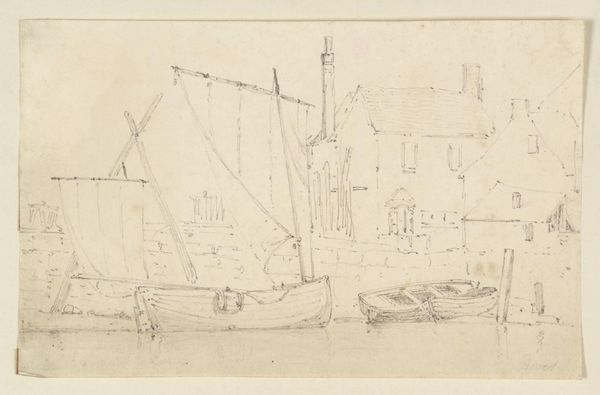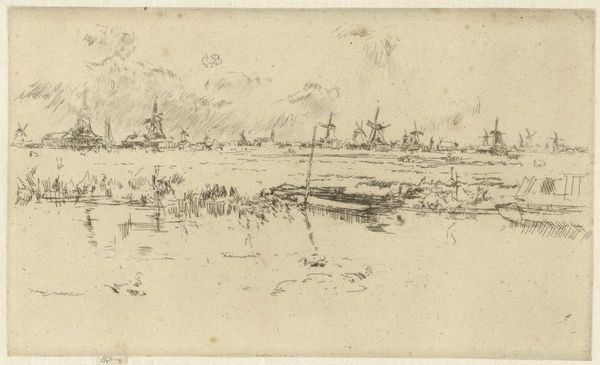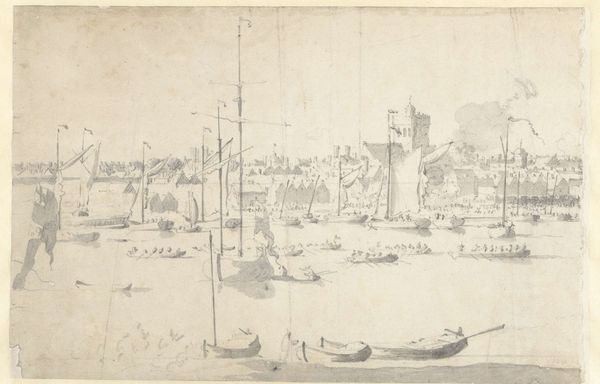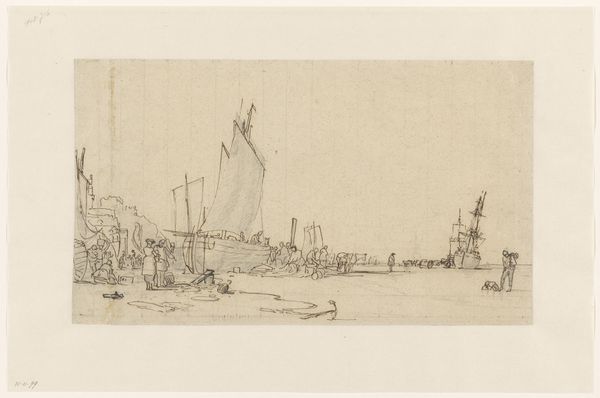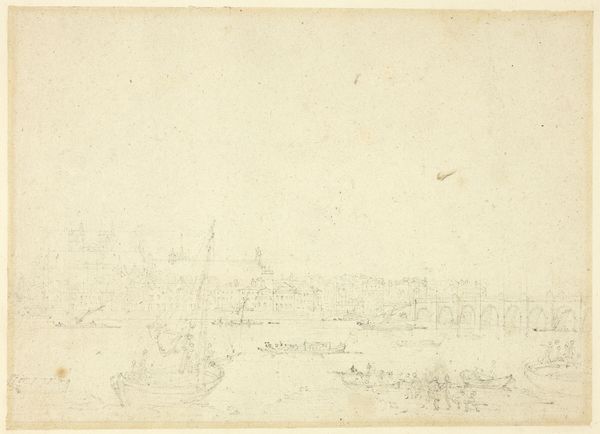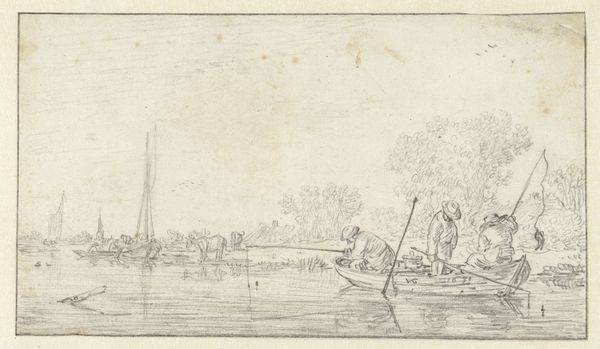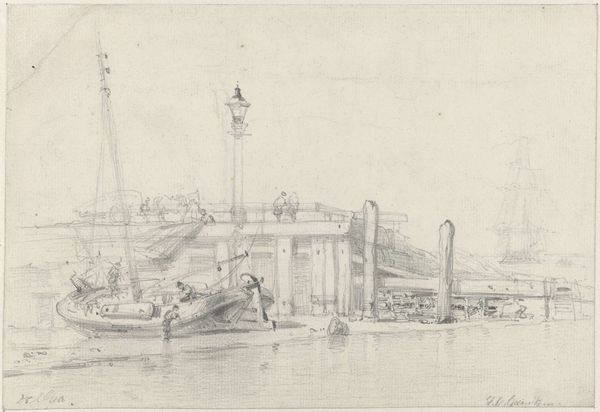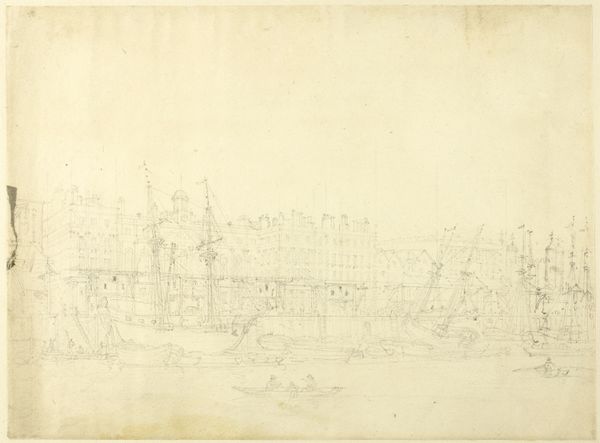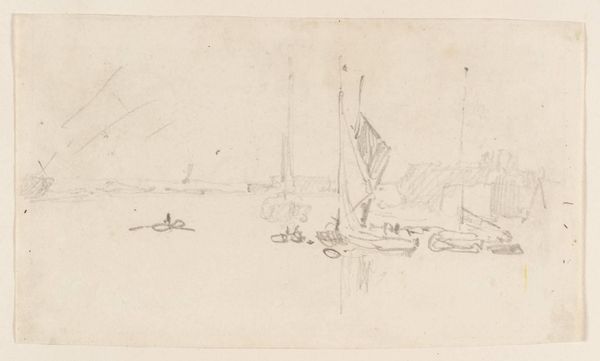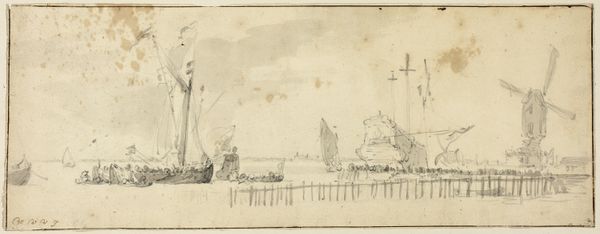
Study for West India Docks, from Microcosm of London c. 1809
0:00
0:00
drawing, print, etching, paper, graphite
#
drawing
#
narrative-art
# print
#
etching
#
landscape
#
etching
#
paper
#
personal sketchbook
#
romanticism
#
graphite
#
cityscape
#
academic-art
Dimensions: 198 × 261 mm
Copyright: Public Domain
Curator: Immediately, it feels so… fragile, like a dream half-remembered. Editor: Well, let’s ground that dream a little. What we have here is "Study for West India Docks, from Microcosm of London," a drawing done around 1809 by Augustus Charles Pugin. It's a mix of graphite and etching on paper, currently residing at The Art Institute of Chicago. Curator: Etching gives it that delicate quality. The way the ships line up, fading into the distance… it’s almost ethereal, as though they could float away at any moment. Editor: Exactly! Think about the materials—the physical process of etching, biting into the metal to create these lines. The social context here is the bustling London docks, a centre of trade and colonial activity, a testament to raw labour. The choice of rendering such a site with these precise methods is a striking artistic decision, I think. Curator: I see it less as detached observation and more of an embrace of industry! Look at how all of these parts become an artwork by showcasing labor and activity with an incredible romantic softness to its representation! The masts like a delicate forest and these details suggesting journeys. This is also showing us the sinews of the early global supply chains, all through the lens of early 19th century aesthetics. Editor: But let's be realistic. It romanticizes something that would be anything but for many! The docks are where goods produced using exploitative labor circulated and the raw resources would travel to. So many were excluded. But look at Pugin's labor too, sketching and re-sketching the same image on plates... there's something telling to this materialist exercise, perhaps in the repetition of capitalist structures? Curator: Ooh! I never considered the visual manifestation of labor so directly mirroring globalist economics! The infinite etch marks are then reflective of endless toil? This work asks questions not about the grand scope but about intimate touch in grand scheme, doesn’t it? I came looking for ghosts; it seems that all along I really needed to see labor. Editor: Perhaps it gives the artwork another dimension when viewed that way. Thanks, these artworks truly gain richness when seen this way.
Comments
No comments
Be the first to comment and join the conversation on the ultimate creative platform.
